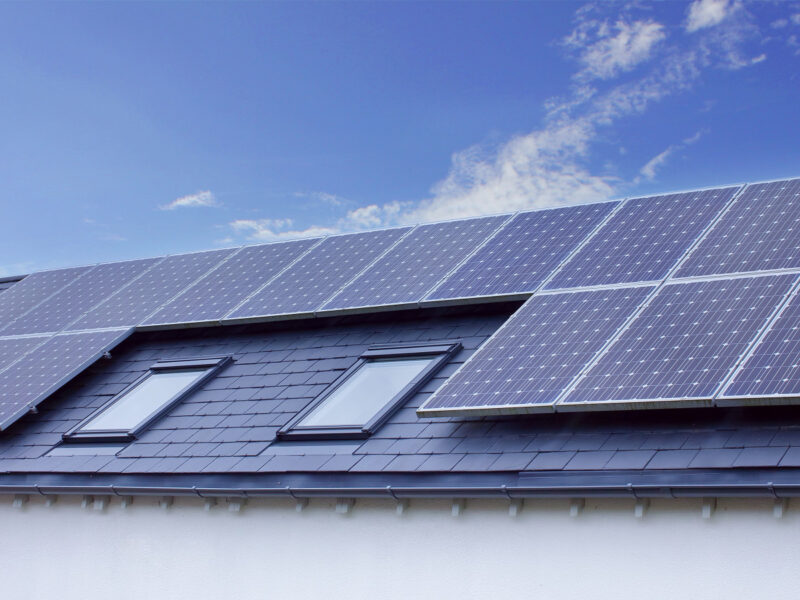In today’s environmentally conscious world, homeowners increasingly consider solar energy a sustainable and cost-effective power source. Solar panels offer a green alternative to traditional electricity and significant savings on utility bills over time.
However, transitioning to solar power involves more than just the desire to harness the sun’s energy; it requires careful planning and consideration to determine the suitable panel capacity for your needs. That said, this guide will give you the knowledge to size up solar panels accurately for your home.
- Assessing Your Energy Needs
The first step in sizing up your solar panel capacity is accurately assessing your energy needs. Understanding your household’s daily electricity consumption is crucial to determining the solar installation size required.
Start by reviewing your past utility bills to gauge your average monthly and annual electricity usage. Make sure to account for any changes in your energy consumption patterns, such as new appliances or lifestyle adjustments.
- Consider Your Location
Your geographical location significantly affects how much sunlight your solar panels will receive. Solar panels work most efficiently in areas with ample sunlight throughout the year.
To assess your location’s solar potential, you can use online tools and solar resource maps that provide data on your area’s average daily sunlight hours. This information will help determine how much energy your solar panels can generate.
- Solar Panel Efficiency
Solar panel technology has advanced significantly, leading to varying levels of efficiency among different panels. Higher-efficiency panels can generate more electricity from the same amount of sunlight, so you may need fewer panels to meet your energy needs. When evaluating solar panels, consider their efficiency ratings and compare options to find the most suitable choice for your home.
- Account For Seasonal Variations
Solar energy production varies throughout the year due to seasonal changes in sunlight. To ensure a consistent power supply, factor in these variations when determining panel capacity.
A solar installation that can cover your peak energy demands during winter will likely generate surplus electricity in the summer. You can either size up your system to meet your highest winter demands or explore options for storing excess energy.
- Budget And Financing
Your budget is a critical factor in sizing your solar panel capacity. Solar installations require an initial investment, but they can lead to long-term savings on your energy bills. Consider your financial situation and explore financing options, such as solar loans or leasing agreements. Evaluate the return on investment (ROI) to determine the most cost-effective approach that aligns with your budgetary constraints.
- Roof Space And Orientation
The available roof space and its orientation are vital in determining the number of solar panels your home can accommodate. South-facing roofs with minimal shading are ideal for solar installations, as they receive the most sunlight throughout the day. Assess your roof’s size, shape, and orientation to ensure it can accommodate the desired panel capacity.
- Consider The Installation Process
The installation process can vary depending on the complexity of your roof and the type of solar panel system you choose. Some installations may require structural modifications to your roof or the addition of a mounting system. Discuss the installation process with your solar provider to understand any potential challenges and costs associated with mounting the solar panels on your home.
- Think About Battery Storage
Integrating battery storage with your solar panel system can enhance its functionality. These batteries store the excess power produced during daylight hours, allowing for its use during the evening or in the event of power disruptions.
While this addition does increase the initial investment, it can significantly improve energy independence and provide a reliable source of power. Assess the value of incorporating battery storage into your solar energy system.
- Local Regulations And Incentives
Before proceeding with your solar installation, research local regulations and incentives that may affect your project. Some areas have specific requirements or permitting processes for solar systems, while others offer financial incentives or tax credits to encourage solar adoption. Understanding these factors can help you navigate the administrative aspects of going solar.
- Maintenance And Warranty
Solar panels typically require minimal maintenance, but it’s essential to consider warranty and maintenance agreements when choosing your system. A reliable warranty can provide peace of mind and ensure that any potential issues are covered for an extended period. Be sure to inquire about warranty terms and conditions when discussing solar panel options with providers.
- Understand Net Metering
Net metering is a billing system that rewards owners of solar energy systems for contributing electricity back to the grid. When your solar panels generate more electricity than what you use, the surplus is transferred to the grid, earning you a credit on your electricity bill.
Understanding how net metering works in your area can influence the size of the solar system you install. In some cases, installing a more extensive system might be financially advantageous to maximize the benefits of net metering.
- Plan For Panel Degradation
Solar panels gradually lose efficiency over time, a process known as degradation. Most panels degrade at about 0.5% to 1% per year. When determining the right panel capacity, factor in this degradation to ensure your system will still meet your energy needs in the future. Choosing panels with a lower degradation rate can be a wise investment, even if they cost more initially.
Conclusion
The journey to solar energy is a rewarding venture that requires careful planning and consideration. By assessing your energy needs, understanding your home’s solar potential, and choosing the suitable panel capacity, you’re setting the stage for a sustainable energy solution. Keep these guidelines in mind, and you’ll find the path to solar success brightly lit by the power you seek to harness.



